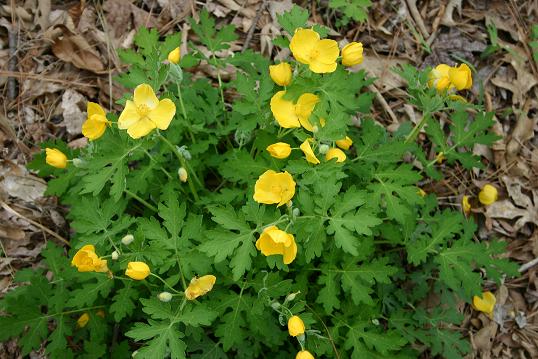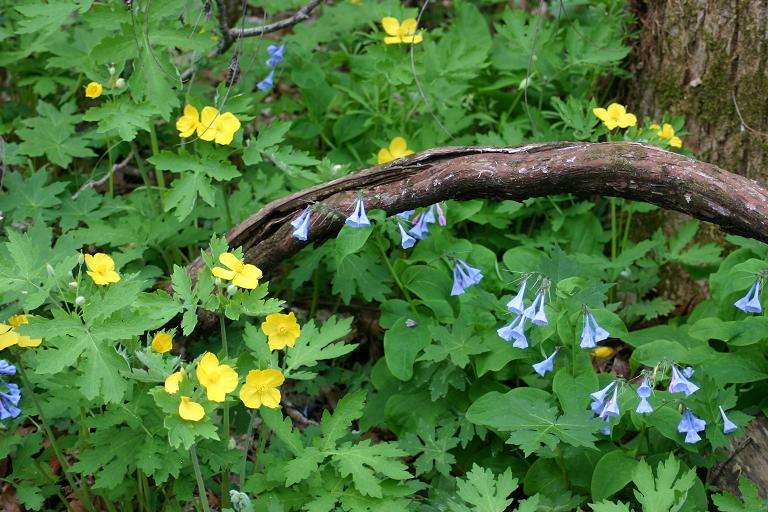Georgia Gardener Newsletter Cool Plant: March 22, 2007
Species Native Range: Eastern/Southeastern US
Hardiness: USDA Zones 4-9
Mature Size: 12 inches tall and wide
Exposure: Partial to full shade
Soil: Organic soil that is average to damp
Ease of Culture: Easy
This is one of my favorite early season native wildflowers. The blue-green foliage appears in late winter with blooms in mid to
late March (zone 8) with continued flowering until April or May when the weather turns hot. By June, many of the plants have
gone dormant for the summer.
A profuse seeder, you only need a few of these plants to get started. When the fuzzy seed pods ripen, you can take them and
spread the seeds throughout your woodland or shade garden. I recommend wearing latex gloves for this procedure as the pods
produce a reddish-orange dye that's hard to remove and somewhat irritating to the skin.
Celandine Poppy mixes fantastically with Virginia Bluebells (pictured above), Trilliums, Foam Flower (Tiarella), Ferns and
Hostas. You may want to mix it with later blooming or emerging plants as CP goes dormant early and can leave a blank spot if
not planted with companions like Variegated Solomon's Seal or Virginia Spiderwort.
Since CP is native, let it go to seed where it wants - and it will. However, nothing is prettier than a forest floor blanketed in
bright yellow on dreary March day.
Sources:
Although I have seen this plant in the nursery or catalog listed below, I cannot guarantee that it will be available at the time
of this newsletter.
Randy's Perennials: Lawrenceville
Sunlight Gardens: mail order
Niche Gardens: mail order
Copyright © 2007 by Theresa Schrum - All rights reserved
No part of this website may be reproduced without the expressed written permission of Theresa Schrum



